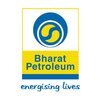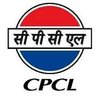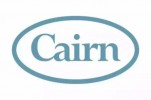Filter interviews by
Chennai Petroleum Corporation Interview Questions, Process, and Tips for Freshers
Chennai Petroleum Corporation Interview Experiences for Freshers
7 interviews found
I appeared for an interview before Apr 2024, where I was asked the following questions.
- Q1. What is mean by ferranti effect ?
- Q2. What is mean by skin effect?
- Q3. What is transformer?
- Q4. What are the types of dc motors?
- Q5. What are the parts of transformer?
Graduate Apprenticeship Trainee Interview Questions asked at other Companies
I applied via Campus Placement and was interviewed before Feb 2023. There were 3 interview rounds.
Basic Aptitude Sections, Mostly from GATE Syllabus
(1 Question)
- Q1. Technical Interview related to Chemical, Basically from Chemical Reaction Eng, Mass Transfer Operatio [Distillation] , Heat Transfer [Conduction Part, Convection and Radiation] Thermodynamics and Fluid Mec...
Topic on related to different aspects of Petroleum
Interview Preparation Tips
Trainee Interview Questions asked at other Companies
I applied via Company Website and was interviewed in Apr 2022. There was 1 interview round.
(2 Questions)
- Q1. Basics of fluid mechanics, thermodynamics
- Q2. Badics of chemical engineering and process
- Ans.
Chemical engineering involves the design, development, and operation of chemical processes and equipment.
Chemical engineering applies principles of chemistry, physics, and mathematics to solve problems related to the production and use of chemicals and materials.
Process design involves selecting the appropriate equipment, materials, and operating conditions to achieve the desired product quality and quantity.
Chemical e...
Interview Preparation Tips
- Process Engineering
Graduate Apprentice Trainee Interview Questions asked at other Companies
I applied via Newspaper Ad and was interviewed before Jan 2022. There were 2 interview rounds.
30 question from Numerical Aptitude, 10 from english language, 10 GK, 10 reasoning, 60 from branch subject and safety. With negative marking ok 25%.
(6 Questions)
- Q1. Where are you working
- Ans. I am working in urea plant, chambal fertilizer chemicals ltd, kota
- Q2. Which process used to manufacture urea?
- Ans.
Urea is manufactured through the Haber-Bosch process.
The Haber-Bosch process is a chemical reaction that combines nitrogen and hydrogen to produce ammonia.
The ammonia is then reacted with carbon dioxide to form urea.
The process involves high pressure and temperature conditions.
The reaction is catalyzed by iron-based catalysts.
The urea produced is used as a fertilizer and in the production of plastics, resins, and adhes
- Q3. How you get prilled urea?
- Ans.
Prilled urea is obtained through a process called prilling, which involves the formation of small spherical pellets.
Prilling is a method used to produce solid spherical particles.
Urea is melted and then sprayed into a tower where it solidifies into small pellets.
The pellets are then cooled and collected as prilled urea.
Prilled urea is commonly used as a fertilizer due to its ease of handling and high nitrogen content.
- Q4. Show the block diagram of urea plant.
- Ans.
The block diagram of a urea plant includes several stages such as synthesis, stripping, and granulation.
The synthesis stage involves the reaction of ammonia and carbon dioxide to form ammonium carbamate, which is then dehydrated to form urea.
The stripping stage involves the removal of excess ammonia and carbon dioxide from the urea solution.
The granulation stage involves the formation of solid urea granules through a p...
- Q5. I make the block diagram
- Q6. Which subject you prefer to discuss from chemical engg
- Ans.
I prefer to discuss topics related to process control in chemical engineering.
Process control: I find the principles and techniques of process control fascinating.
Control systems: I enjoy discussing the design and optimization of control systems in chemical processes.
Instrumentation: I am interested in the various instruments used in chemical engineering and their applications.
Automation: I find the automation of chemi...
Interview Preparation Tips
Engineering Assistant Interview Questions asked at other Companies
Chennai Petroleum Corporation interview questions for popular designations
I applied via NATS and was interviewed in Sep 2021. There was 1 interview round.
(1 Question)
- Q1. Tell me about yourself.
Interview Preparation Tips
- Basic knowledge about where you going
I hope this will help your thoughts.
Interview Questionnaire
6 Questions
- Q1. The steam turbines rotor it's running time which bearing take load ?
- Ans.
The steam turbines rotor puts load on the thrust bearing.
The steam turbines rotor puts load on the thrust bearing.
The thrust bearing is designed to handle the axial load generated by the rotor.
Other bearings in the steam turbine, such as journal bearings, handle radial loads.
The thrust bearing is typically located at the non-drive end of the rotor.
Examples of thrust bearings used in steam turbines include tilting pad b
- Q2. Why need lube oil number cod ?
- Ans.
Lube oil number cod is needed to identify the type of lubricant used in machinery.
Lube oil number cod helps in identifying the viscosity of the lubricant.
It also helps in determining the type of base oil used in the lubricant.
Different machinery requires different types of lubricants with specific viscosity and base oil.
Lube oil number cod helps in ensuring the correct lubricant is used for the machinery.
For example, a...
- Q3. Yes we need identify lube oi density velocity
- Q4. What is the meaning TDC ? BDC?
- Ans.
TDC stands for Top Dead Center and BDC stands for Bottom Dead Center.
TDC is the point where the piston is at its highest position in the cylinder.
BDC is the point where the piston is at its lowest position in the cylinder.
These terms are commonly used in internal combustion engines.
The position of the piston at TDC and BDC is important for engine timing and performance.
TDC and BDC are also used in reference to the posi...
- Q5. Top dead center /Bottom dead center
- Q6. 1 Bar how much PSI?
- Ans.
1 bar is equal to 14.5038 PSI.
1 bar is a unit of pressure measurement in the metric system.
PSI stands for pounds per square inch and is a unit of pressure measurement in the imperial system.
1 bar is equal to 100,000 Pascals (Pa) or 14.5038 PSI.
This conversion is important in industries such as automotive and aerospace engineering.
Interview Preparation Tips
This interview was a technical one but was majorly a stress test. It lasted for about 1 hour 10 minutes. The interviewer wanted to test both my knowledge and communication skills. Most of the questions asked to me were related to my B.Tech curriculum i.e. computer science related topics. He stressed a lot on the basics related to my project topic. Luckily I was able to answer most of the questions correctly. I tried to answer each question with examples and also used props on the table (like pens, paperweights, pen stands etc.) to explain my theories. It was my first offcampus interview, and I think I did pretty well for a fresher. You need to stay calm and should apply presence of mind. Please go through the job description thoroughly word-by-word and recheck your resume to ensure that you are a best-fit for the position.
Mechanical Supervisor Interview Questions asked at other Companies
I applied via Walk-in and was interviewed before Apr 2021. There was 1 interview round.
(2 Questions)
- Q1. Nil not in users bad
- Q2. Nil Waste of time correction
- Ans.
Nil waste of time correction refers to the process of eliminating unnecessary or unproductive activities in order to optimize time management.
Identify time-wasting activities
Prioritize tasks based on importance and urgency
Delegate tasks when possible
Use time management tools such as calendars and to-do lists
Regularly evaluate and adjust time management strategies
Interview Preparation Tips
Keep do ur work with hardworking but it'd not user
Technician Interview Questions asked at other Companies
Top trending discussions






Interview questions from similar companies

I applied via Campus Placement and was interviewed before Nov 2018. There was 1 interview round.
Interview Questionnaire
2 Questions
- Q1. Motor maintenance battery bank Breaker maintenance Earthpit
- Q2. Which type of maintenance of induction motor
- Ans.
There are two types of maintenance for induction motors: preventive and corrective.
Preventive maintenance involves regular inspections, cleaning, lubrication, and replacement of worn parts to prevent breakdowns.
Corrective maintenance involves repairing or replacing parts after a breakdown has occurred.
Preventive maintenance is more cost-effective in the long run and helps to extend the life of the motor.
Examples of pre...
Interview Preparation Tips

I applied via Walk-in
Interview Questionnaire
10 Questions
- Q1. Lubricants related questions
- Q2. Meaning of meneral oil
- Ans.
Mineral oil is a clear, colorless, odorless, and tasteless oil derived from petroleum.
Mineral oil is commonly used in cosmetics, pharmaceuticals, and as a lubricant.
It is often used as a laxative to relieve constipation.
Mineral oil can also be found in baby oil and various skincare products.
It is important to note that mineral oil should not be ingested in large quantities as it can cause health issues.
- Q3. 5w30 pcmo oil questions
- Q4. Lubricants fired experience
- Ans.
I have 5 years of experience in selling lubricants to industrial clients, achieving 20% growth in sales each year.
Developed strong relationships with key clients in the industrial sector
Identified and pursued new business opportunities in the lubricants market
Provided technical expertise and support to clients in selecting the right lubricants for their needs
Consistently met or exceeded sales targets through effective
- Q5. Lubricants related questions
- Q6. Working of Lubricants
- Ans.
Lubricants are substances used to reduce friction between surfaces in mutual contact, which ultimately reduces the heat generated when the surfaces move.
Lubricants can be in the form of oils, greases, or solid lubricants.
They are used in various industries such as automotive, manufacturing, and aerospace.
Lubricants help to extend the lifespan of machinery by reducing wear and tear on moving parts.
They also help to impr...
- Q7. Different mco pcmo and cvo Lubricants
- Ans.
MCO, PCMO, and CVO lubricants are different types of lubricants used in various industries for different purposes.
MCO stands for Marine Cylinder Oil, used in marine engines to reduce friction and wear.
PCMO stands for Passenger Car Motor Oil, used in automotive engines to lubricate moving parts and reduce heat.
CVO stands for Commercial Vehicle Oil, used in heavy-duty vehicles like trucks and buses to provide lubrication
- Q8. Lubricants questions
- Q9. Different of Lubricants 20w40 10w30
- Ans.
Lubricants 20w40 and 10w30 differ in their viscosity grades, with 20w40 being thicker and better suited for high temperatures.
20w40 has a higher viscosity grade compared to 10w30
10w30 is thinner and flows more easily in cold temperatures
20w40 is better suited for high temperature environments
10w30 may provide better fuel economy due to lower viscosity
- Q10. Different of Lubricants 15w40 5w30
- Ans.
15w40 and 5w30 are different types of lubricants used in vehicles, with varying viscosity and temperature ranges.
15w40 has a higher viscosity compared to 5w30
5w30 is better suited for colder temperatures due to its lower viscosity
15w40 is commonly used in diesel engines while 5w30 is used in gasoline engines

I applied via Recruitment Consultant and was interviewed before Apr 2020. There were 3 interview rounds.
Interview Questionnaire
1 Question
- Q1. Process related
Interview Preparation Tips
Chennai Petroleum Corporation Interview FAQs
Tell us how to improve this page.
Chennai Petroleum Corporation Interviews By Designations
- Chennai Petroleum Corporation Technician Interview Questions
- Chennai Petroleum Corporation Assistant Engineer Interview Questions
- Chennai Petroleum Corporation Draughtsman Mechanical Interview Questions
- Chennai Petroleum Corporation Safety Officer Interview Questions
- Chennai Petroleum Corporation Chemical Engineer Interview Questions
- Chennai Petroleum Corporation Graduate Apprentice Trainee Interview Questions
- Chennai Petroleum Corporation Engineering Assistant Interview Questions
- Chennai Petroleum Corporation Mechanical Supervisor Interview Questions
- Show more
Interview Questions for Popular Designations
Chennai Petroleum Corporation Interview Process for Freshers
based on 3 interviews
Interview experience
Interview Questions from Similar Companies
Fast track your campus placements
Chennai Petroleum Corporation Reviews and Ratings
based on 211 reviews
Rating in categories
|
Instrumentation Technician
30
salaries
| ₹2 L/yr - ₹5.2 L/yr |
|
Safety Officer
28
salaries
| ₹1.8 L/yr - ₹4.9 L/yr |
|
Mechanical Technician
23
salaries
| ₹1.2 L/yr - ₹7.5 L/yr |
|
Apprentice Trainee
20
salaries
| ₹0.9 L/yr - ₹6 L/yr |
|
Trainee
18
salaries
| ₹1 L/yr - ₹3 L/yr |

Bharat Petroleum

Hindustan Petroleum

GAIL

Petrofac
- Home >
- Interviews >
- Chennai Petroleum Corporation Interview Questions >
- Chennai Petroleum Corporation Interview Questions for Fresher














